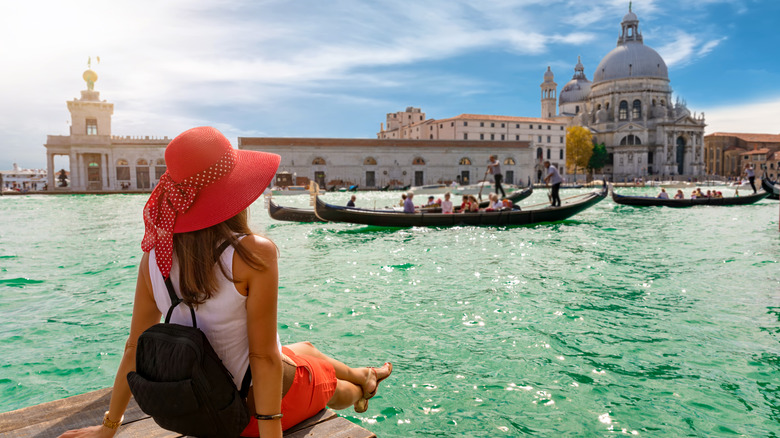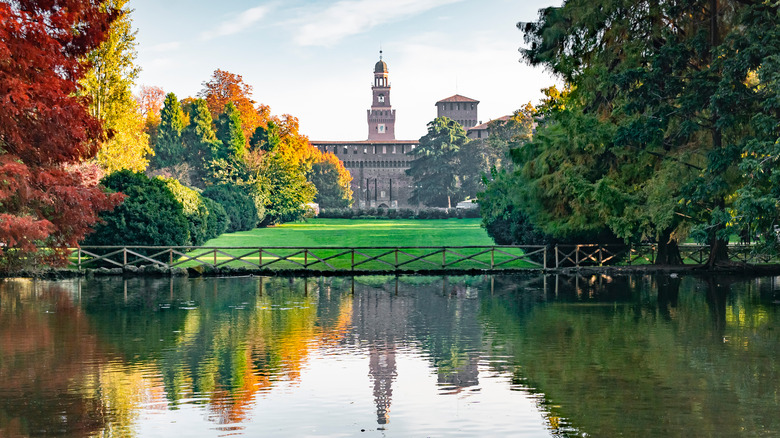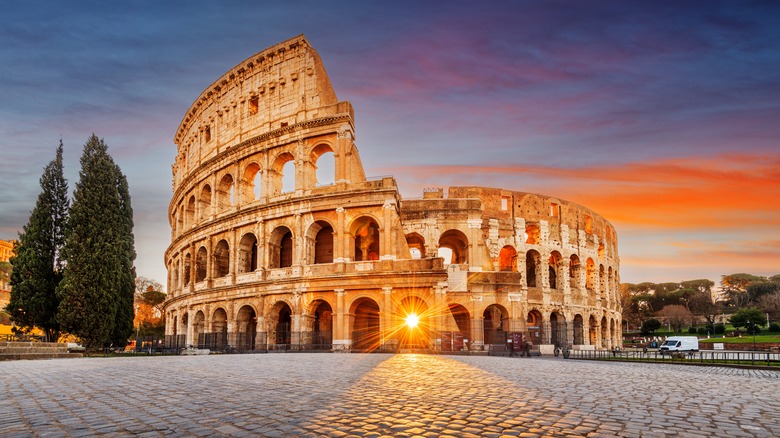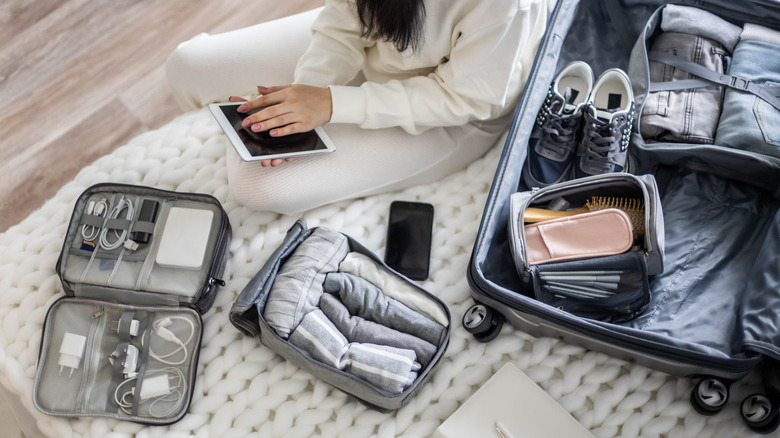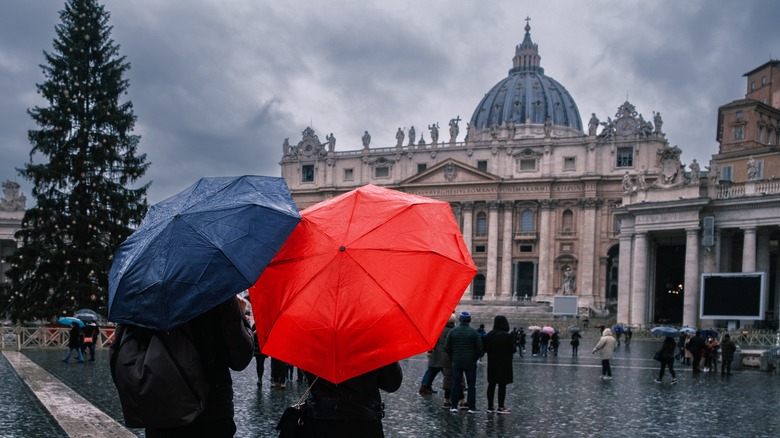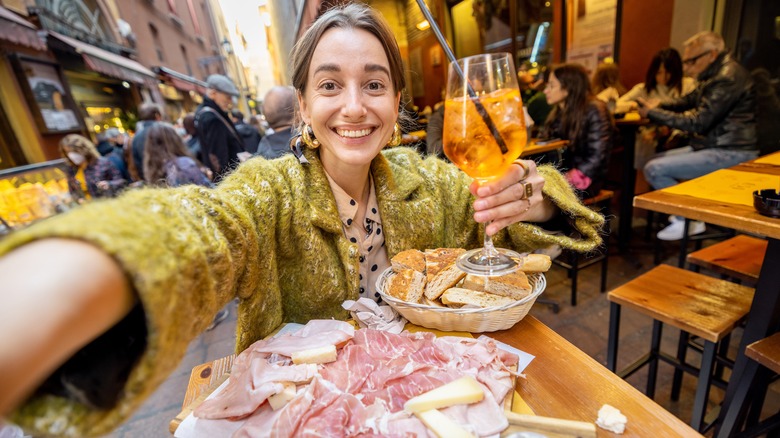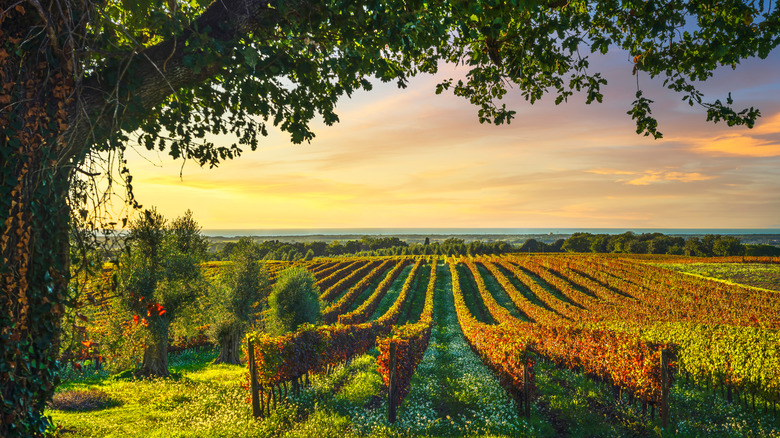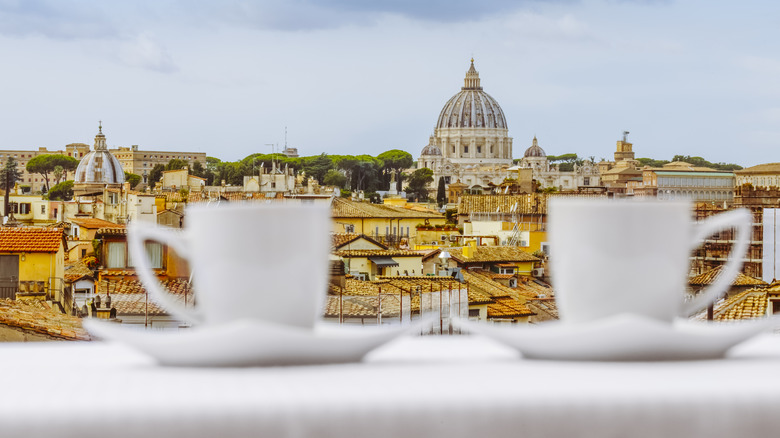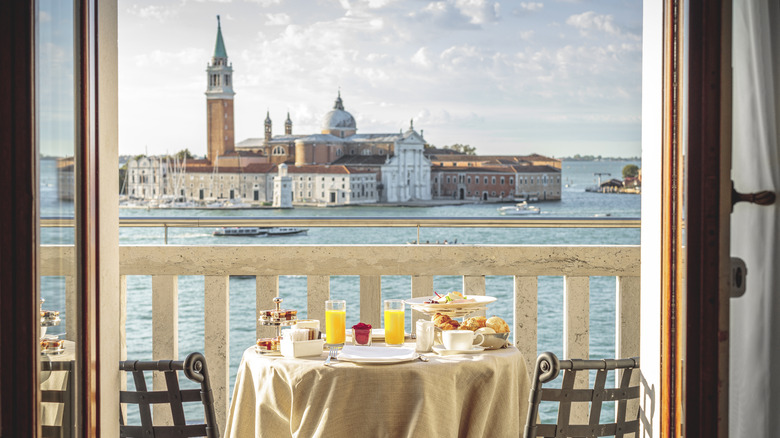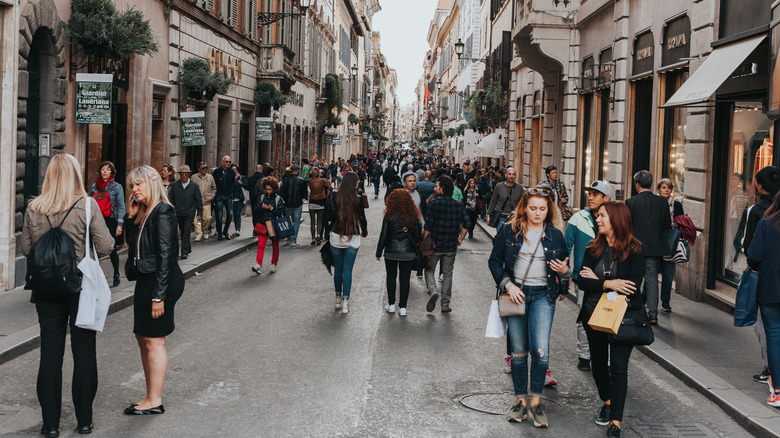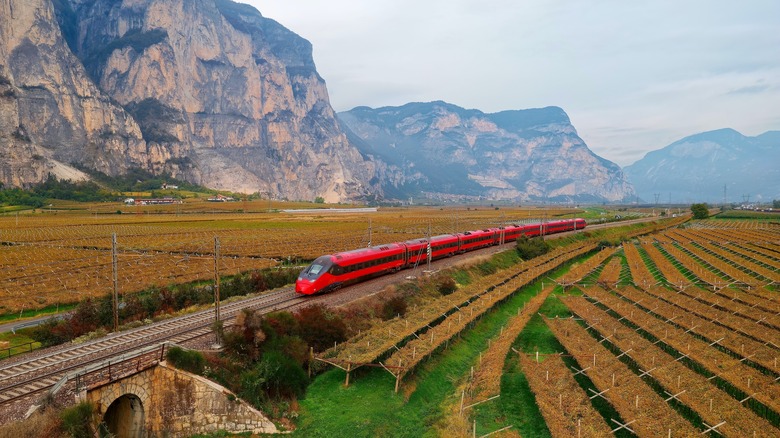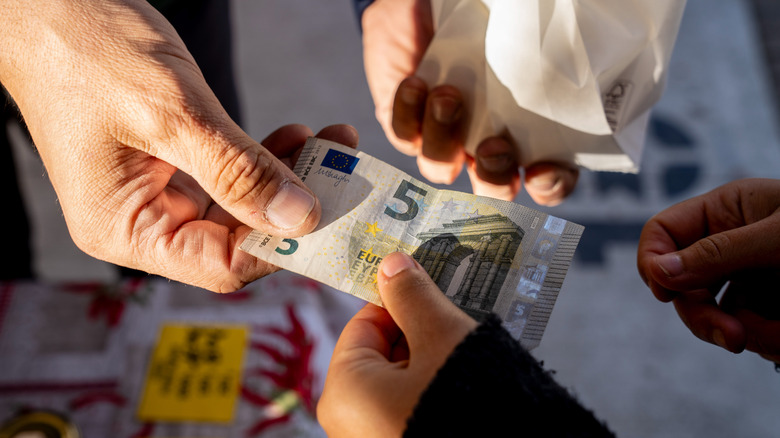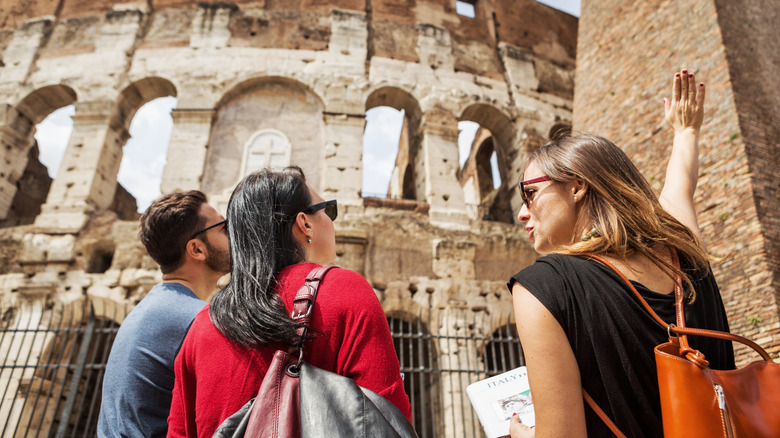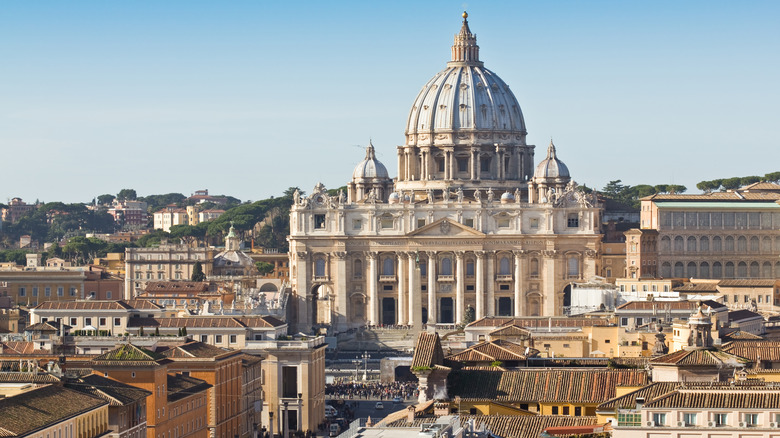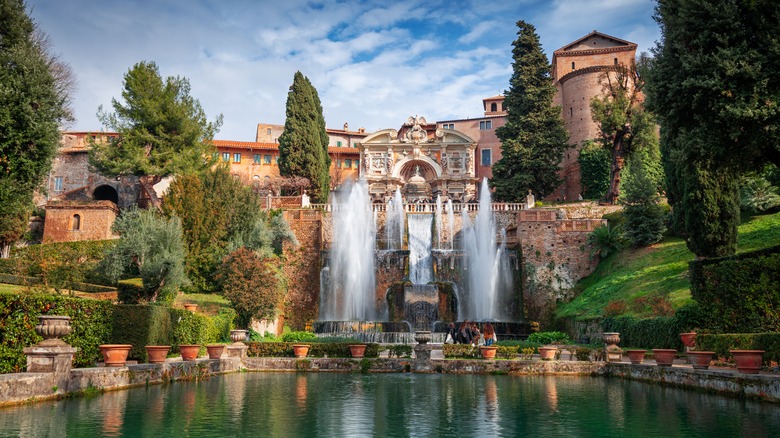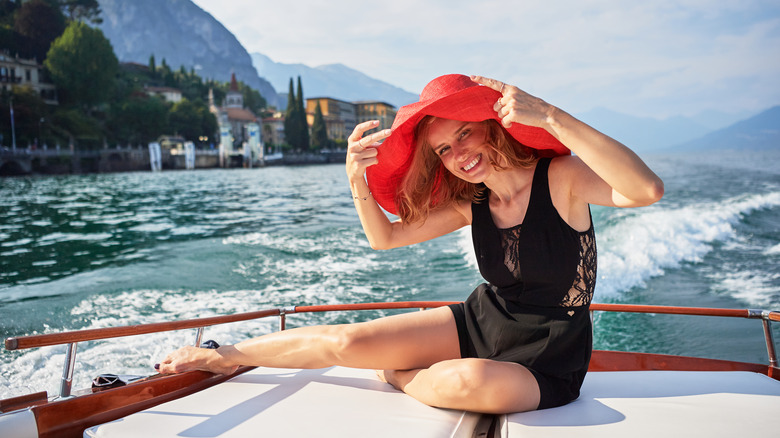15 Essential Travel Hacks When Visiting Italy
With a rich culture, vast history, incredible food, flowing wine, iconic architecture, and much to do, an Italian getaway is an absolute delight. Whether you are a traveler who loves beaches, charming cities, lake resorts, or breathtaking landscapes during every season, you can experience it all and then some in Italy. Of course, narrowing down your travel to-do list is a must when vacationing in Il Bel Paese (Italian for "the Beautiful Country") to avoid feeling overwhelmed and overbooked.
In addition to cultivating a well-thought-out itinerary, wanderers can easily make the most of their time in Italy by utilizing a few expert tips and helpful tricks. From planning and packing to how-to's for immersing yourself in your incredible destination and exploring like a local, there are a variety of ways to take your holiday to the next level. So, to ensure that you have the trip of a lifetime, here are your essential travel hacks for visiting Italy.
Visit in the off-season
There is no denying the fact that Italy is stunning practically all year round. And, for many globetrotters, it simply does not get any better than summer in Italy. However, if you are trying to avoid the crowds and enjoy this lovely country at an affordable price, heading to Italy in the low or off-season is the way to go. Another perk of traveling in the off-season here is that the weather around mid-November to mid-March is also delightfully mild and amenable.
Depending on your intended destination in the Beautiful Country, you can experience warm weather and sleepy beach towns like those found on the islands of Sardinia and Sicily. Alternatively, for a more autumnal setting, much of central Italy has stunning foliage and perfect temperatures for fun-filled festivals and celebratory events. Travelers can also enjoy first-rate skiing and more in the Alps, the Dolomites, and the Apennines around this time. So, there really is no downside to visiting off-season.
Start in Rome
When planning your great adventure in Italy, it is highly recommended that you have a logical starting point or even a home base. Since the Beautiful Country is large and expansive, travelers cannot do it all in a day or even a few days. Factors like the length of your stay, time of visit, and personal interests will all play a role in deciding where to begin. Still, if this is your first time exploring this incredible country, it never hurts to start in Rome.
Not only is the Eternal City brimming with culture, phenomenal architecture, Roman ruins, and more, but Rome also has a large international airport that makes flying into this city pretty straightforward. Likewise, there are many brilliant potential day trips from Rome (via car or train), such as Florence, Pisa, Siena, and even Pompeii. Thus, Rome-bound travelers can spend a couple of days exploring the Eternal City and then easily spend the rest of their vacation in various other parts of this magnificent country.
Pack light
If you are flying across the ocean to Europe, packing light is likely the last thing on your mind, especially if you are jet-setting in the off-season. But, there are more than enough reasons for travelers to pack light for their tour of Italy. Not only will packing light save you money on baggage fees, but it will also reduce the likelihood of your luggage getting lost, which can often happen during international travel. What's more, packing light will allow you to utilize the available space in your carry-on and make it easy to get dressed while on your way.
That said, one of the best hacks for packing light, no matter the season, is to bring versatile clothing that can easily be a part of a well-thought-out outfit or two. Likewise, layers, pants other than jeans, and a few stylish scarves can go a long way on your trip since you will be wandering about Rome and other iconic cities in Italy. Style matters here. Speaking of wandering about, make sure you have weather-appropriate dressy shoes, comfortable casual shoes, and a lightweight, waterproof jacket so you are prepared for any activities you may have planned.
Prepare for the weather
If you visit Italy in the off-season, certain spots can be chilly. So, it is highly recommended that you opt for essentials like a warmer coat, an umbrella, and at least one sweater. Northern destinations like Milan, Venice, and Bologna are typically cooler towards the beginning of the season. And even if you visit in the latter half, temperatures tend to dip in the evenings in warmer spots like Rome and the Amalfi Coast, making a jacket or light sweater a must.
During the off-season, the overall weather can best be described as fall-like throughout most of the Beautiful Country. So, if you keep that in mind and have a few travel essentials in tow, you should be able to handle anything that comes your way. However, it is worth noting that if you have plans to visit Venice, you will likely need some rain boots because this famed city tends to flood around this time of year. Being built on water comes with its risks.
Taste all the food and drink
Unsurprisingly, a major must-do here is to enjoy all the cuisine, wine, and coffee Italy is known for. But first and foremost, one of the most crucial things to remember is that what you think classifies as Italian food is nothing compared to the real stuff. Be prepared to experience a whole new world, and do not be afraid to step outside your comfort zone and try all the delicious eats and drinks that await you.
This means instead of cheating yourself by sticking to pizza, lasagna, spaghetti, and other favorites — indulge in new things or at least go out of your way to indulge in some truly authentic cuisine. This country is packed with life-altering eats, everything from Fiorentina steak and polenta to ossobuco, xicchetti, and more, so self-proclaimed foodies should make plans to sample them all. With a world of delectable appetizers, desserts, and refreshing after-dinner drinks, this is definitely not the place to stick to what you are familiar with. You and your taste buds will not regret it.
Savor wine country
No tour of Italy is complete without a trip to Tuscany, Italy's renowned wine country. Of course, once there, you will quickly see that you could spend a lifetime in this breathtaking landscape with its countless wineries and vineyards. There are even several wine regions within the region of Tuscany, so you definitely have your work cut out for you when it comes to vino.
But that is not all that Tuscany has to offer. There is also a wealth of impressive medieval cities to explore, including Siena, Lucca, Montepulciano, and San Gimignano. And, when coupled with stunning rolling hills, winding roads, epic vistas, and more, travelers should absolutely take the time to savor the entire adventure from start to finish. So, if your current itinerary allows you to sip the latest vintage at a handful of vineyards, but you feel like you will be left wanting more, then why not consider making your Tuscan wine-tasting adventure more than just a day trip so you can truly drink it all in.
Embrace the coffee culture
Italians also take their coffee seriously, so you should follow suit when in town. Thus, a vital hack to make the most of your time in Italy is to embrace the coffee culture. One of the best ways to do that is by learning the ropes ahead of time, which includes knowing to always order at the counter (locals rarely sit at tables for a quick pick-me-up). Visitors should also note that one-size-fits-all here — a single serving cup is what you can expect — there are no smalls, mediums, or larges.
Similarly, iced coffee, though delicious, is not something you will find in Italy. Caffeinated favorites like cappuccinos are best for breakfast, while macchiatos are considered afternoon drinks. Espresso or black coffee, on the other hand, is viewed as the perfect way to end dinner, but it is okay to drink throughout the day. It is also worth mentioning that latte simply means milk, so unless you want a glass of milk sans the coffee, do not ask for a latte — you'll need to order a caffè latte.
Plan on adjusting your expectations for mealtime
Speaking of breakfast, lunch, and dinner, first-time visitors to Italy will need to adjust their expectations. For example, meals typically happen later in the day. Though breakfast is usually around 7 a.m. to 9 a.m., you will be disappointed if you expect a large spread. In Italy, breakfast is sweet, small, simple, and paired with coffee.
In contrast, lunch is usually between 1 p.m. and 2:30 p.m. and is considered the most important meal of the day. Lunch in Italy, therefore, consists of several carb-rich courses (primo, secondo, and a contorno or a side dish). For dinner, most people eat around 8:30 p.m. or later. Restaurants are usually closed after lunch until about 7 p.m. (reservations are a must), and you can expect seasonal eats spread out over several courses. However, dinner tends to be much lighter than the standard hearty lunch here. Nonetheless, if you are hoping for a quick dinner, there is really no such thing at a sit-down restaurant in Italy — on average, most dinners can take up to two hours or more.
Stay clear of tourist traps
Sadly, tourist traps are very much a reality in Italy. But if you know what to look for, you can avoid them. When it comes to sampling the cuisine and fanfare, travelers can spot the tourist trap restaurants, often by their location, in the main piazza or public square. Another telltale sign that a coffee shop, bar, or restaurant should be avoided is if they have a promoter trying to usher in patrons. This often means the establishment has unreasonably high prices and less authentic eats.
Similarly, souvenir shops and major city shopping areas will cost you more. So it is best to shop away from busy marketplaces or in less popular spots outside town. Also, some attractions are more tourist traps than anything else. For instance, must-sees like the balcony from "Romeo and Juliet" in Verona and the Duomo in Florence are not what one would expect. Tourists and street traffic have overrun the balcony, and the Duomo is quite the trek, with over 400 steps to the top to views of Florence you can see from elsewhere without the endurance work. Here, it pays to read the reviews so you do not spend hundreds of dollars on a tour or advance tickets only to walk away unimpressed or out of breath.
Get a Eurail Pass
For budget-conscious travelers, it pays to get a Eurail Pass when visiting Italy. Not only does this train pass allow for unlimited wandering through the country over a period of 24 hours, but it also provides you access to high-speed train travel, which makes getting to your next stop on your itinerary a breeze. Even if you do not mind spending more on transportation, the Eurail Pass is still a great way to see as much of the country as possible.
Multi-day and month-long ticket options are also available for purchase. And with many perks like reduced prices for passengers under 26 as well as discounts for ferries, busses, car rentals, and more, the Eurail Pass is definitely a game-changer. So, regardless of the length of your stay, you can take worrying about transportation costs off your list. Plus, a bonus here is that the Eurail Pass is ideal for Rome visitors who plan to check out a few neighboring cities.
Always have some cash handy
Savvy travelers these days are all about having a credit card or two in their wallet for wandering, as they should. However, having some cash or local currency on you is definitely in your best interest, particularly if you are visiting Italy. For many people, finding a place to exchange money or a nearby ATM dispensing Euros can feel like an extra step more than a travel hack, but having some cash to hand is never a bad idea.
In fact, there are several reasons why having cash on your Italian getaway is key. For instance, there may be times when the card reader is down, or you may have stopped off at a shop, food stand, or outdoor market that only accepts Euros. Travelers will likely need some tip money for hotel staff, tour guides, self-care services, taxis, buses, and more. Remember, you should not have thousands of dollars on your person, as pickpocketing or theft is an issue in most areas of Europe that attract a large number of tourists, but a little cash can go a long way.
Speak with the locals
For visitors who have taken the time to learn some common phrases or are even fluent in Italian, speaking with the locals allows you to test out what you have learned and make new friends. Even if you do not know any Italian, most people in Italy are outgoing and enjoy conversing with visitors. Chatting with people also allows you to blend in better and gives you the perfect opportunity to ask for recommendations.
But before striking up a conversation, you should follow a few communication etiquette rules, like starting with small talk, being appreciative of your surroundings, being courteous, and being respectful of the culture. This also means avoiding critical comments, especially regarding politics or complaining to complete strangers. That said, do not be afraid to greet people like a local, smile, or talk with your hands (Italians are expressive when communicating) — just make sure to refrain from any not-so-polite hand gestures.
Respect religious sites
While officially a secular state, Italy is famous for a long tradition of faith, so it is a good idea to respect the religious sites you visit, although that should really go without saying. Churches, in particular, are conservative, and some have even implemented strict dress codes when it comes to tourists. If you are visiting Italy in the off-season, chances are you will be wearing weather-appropriate attire, so covering up when exploring these fascinating places should not be that difficult.
In addition to following the dress code, tourists can respect religious sites by refraining from taking tons of photos — even when permitted. When marveling at all the beauty of these sacred places, it is also essential to stick to the tour. This means no sneaking off through marked-off areas or disturbing people who are there as part of their daily life, such as nuns, priests, members of the congregation, or others who came to worship.
See more than just Rome
As mentioned, the Eternal City is a great place to start your adventure. But, despite "all roads leading to Rome," it is always recommended to branch out. If there is ample room in your schedule to explore more of Italy, then what are you waiting for? Grand cities like Venice, Milan, Naples, Bari, and Florence are only a few hours away by train and teeming with wonderful attractions.
What's more, incredible destinations like Tivoli, the region of Tuscany, Pompeii, and the Amalfi Coast are all within driving distance. So, make sure you see more than just Rome, and if you are staying for a week or longer, then there is definitely no reason to limit yourself. Although you may not be able to do everything in one trip, all hope is not lost as this just leaves more for you to see on your next trip to the Beautiful Country.
Appreciate La Dolce Vita
La Dolce Vita, or the sweet life, is simply a more relaxed and delicious way of living. When visiting Italy, appreciating, if not wholeheartedly embracing, this lifestyle is highly recommended. Whether you consider yourself a tourist or a traveler, spending time in the Beautiful Country is bound to change your perspective.
Ultimately, this is what exploring the world is about — expanding your horizons and enriching your life. With a focus on family, nature, art, real food, wine, and fun, it seems silly not to relish in La Dolce Vita. Undoubtedly, as one of the most beloved phrases gifted from this destination and a vital travel hack on your itinerary, do not be afraid to slow down and enjoy the simple pleasures on holiday in Italy. And, if it so happens to spill over into your everyday life after the trip of a lifetime, then that might just be money well spent.
